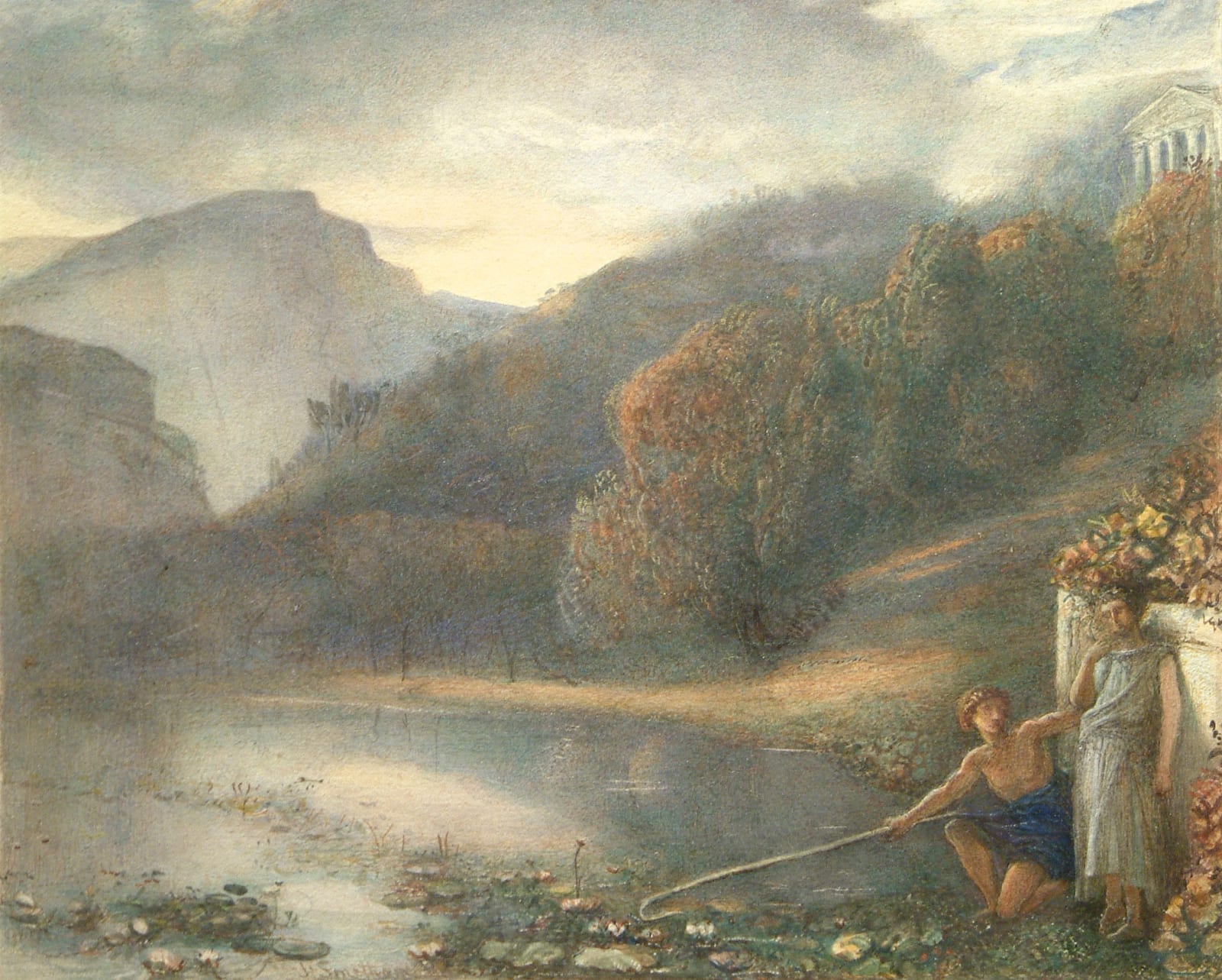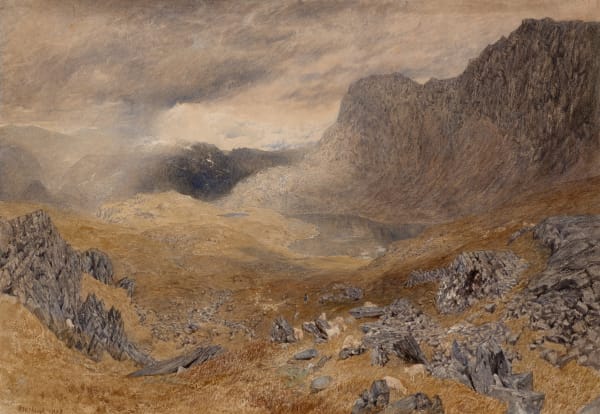James Smetham (1821-1889)
Smetham was a curiously isolated figure. He was aware of this and in 1854 he told Ruskin: ‘I have felt the dearth of intercourse on the subject of my occupations… With artists generally I have not felt much drawn to associate’ (Letters, 1902, p.8). The son of a Wesleyan minister, he evolved ‘a place of life, beginning in a course of long disciplinary study, and intended to combine art, literature, and the religious life all in one’. At first he supported himself by painting small-scale portraits; when photography began to supersede this means of livelihood, he became drawing-master at the Wesleyan Normal College in Westminster. He achieved no popular success, and for the last twelve years of his life was afflicted with madness brought on by a combination of religious melancholia and a sense of disappointment and failure. His work was admired and encouraged by Ruskin, and by Rossetti who remained a faithful friend, and whose letters show that as late as 1878 he was concerned for his well-being.
In 1869 Rossetti described Smetham, apropos of his long review of Gilchrist’s Life of Blake, reprinted in the second edition, as; ‘a painter and designer of our own day who is, in many signal respects, very closely akin to Blake; more so probably than any other living artist could be said to be. James Smetham’s work – generally of small or moderate size – ranges from Gospel subjects, of the subtlest imaginative and mental insight, and sometimes of the grandest colouring, through Old Testament compositions and through poetic and pastoral of every kind to a special imaginative form of landscape.
‘In all these he partakes greatly of Blake’s immediate spirit, being also often nearly allied by landscape intensity to Samuel Palmer, in his youth the noble disciple of Blake. Mr Smetham’s works are very numerous, and, as other exclusive things have come to be, will some day be known in a wide circle.’ (Extract from J.A. Gere, Pre-Raphaelite Drawings in the British Museum, 1994, p. 138)
In 1869, Rossetti described his friend James Smetham as ‘a painter and designer of our own day who is, in many single respects, very closely akin to Blake; more so probably than any other living artist could be said to be. James Smetham’s work – generally of small or moderate size – ranges from Gospel subjects, of the subtlest imaginative and mental insight, and sometimes of the grandest colouring, through Old Testament compositions and through poetic and pastoral of every kind to a special imaginative form of landscape’ (Gilchrist, Life of Blake). Despite encouragement from Rossetti and John Ruskin, the artist was an isolated figure who achieved no popular success in his lifetime, which ended in disappointment, madness and melancholia.
This scene of poet taking in the view was done in 1867.
The Maas Gallery, 6 Duke Street, St. James's, London, SW1Y 6BN
+44 (0) 20 7930 9511 | mail@maasgallery.com
This website uses cookies
This site uses cookies to help make it more useful to you. Please contact us to find out more about our Cookie Policy.



